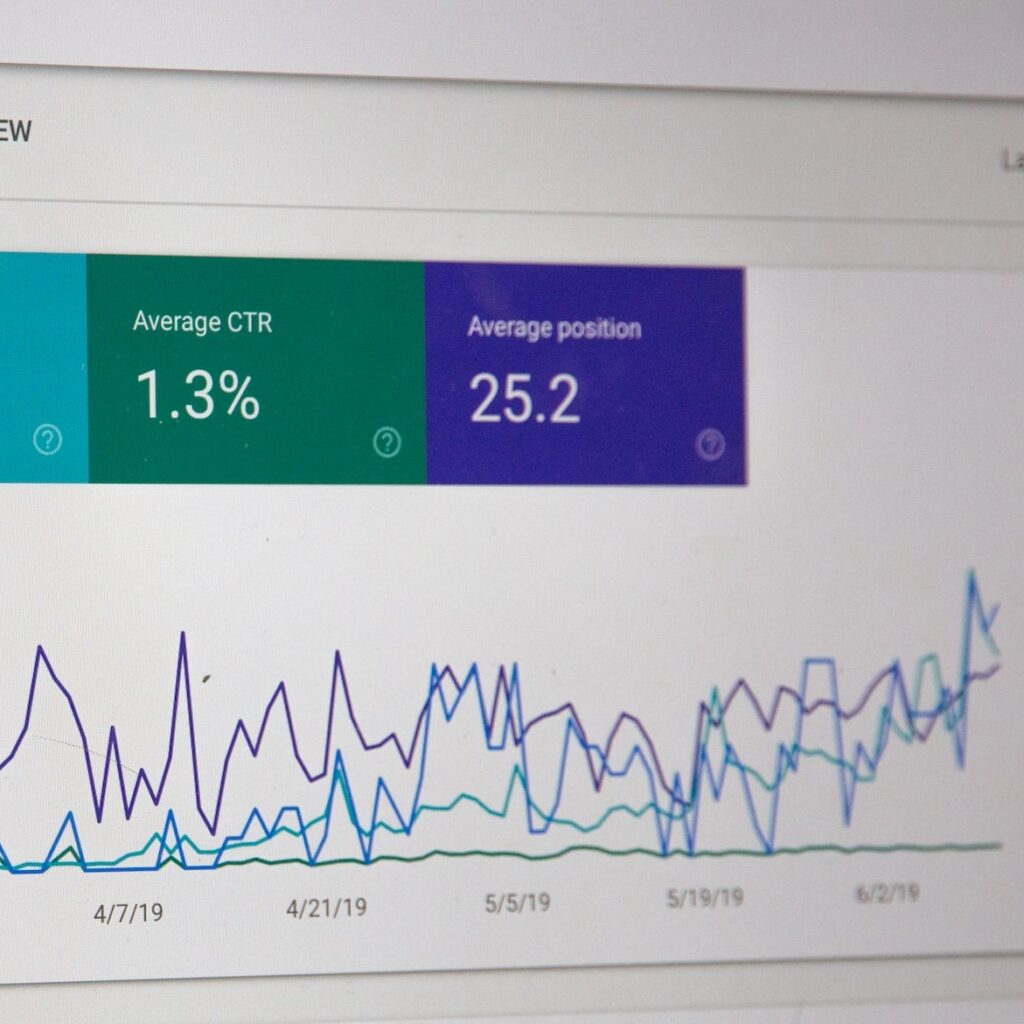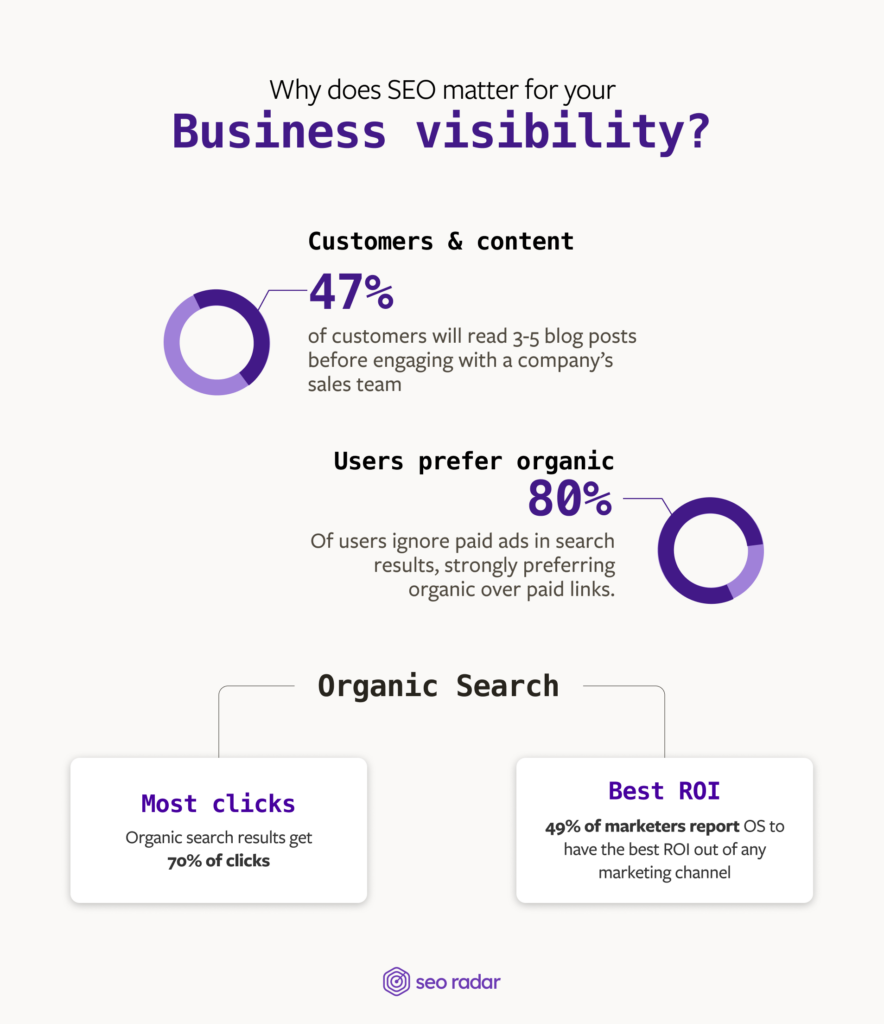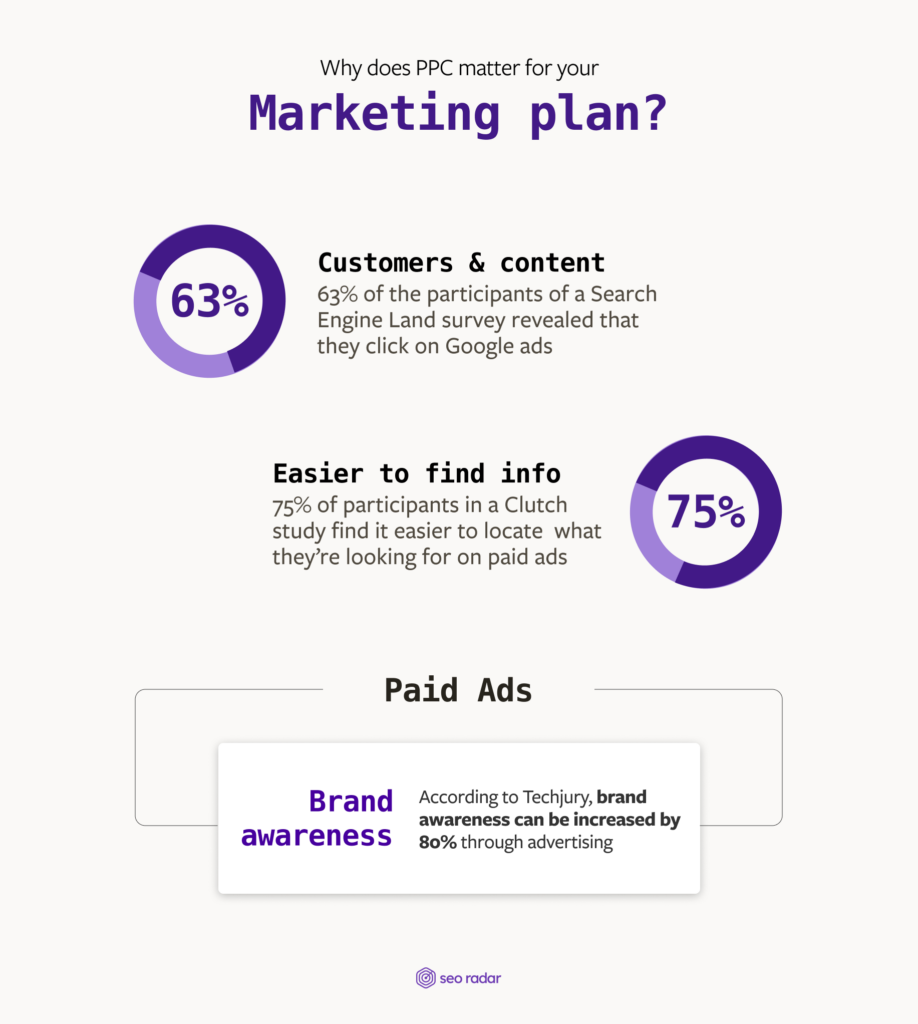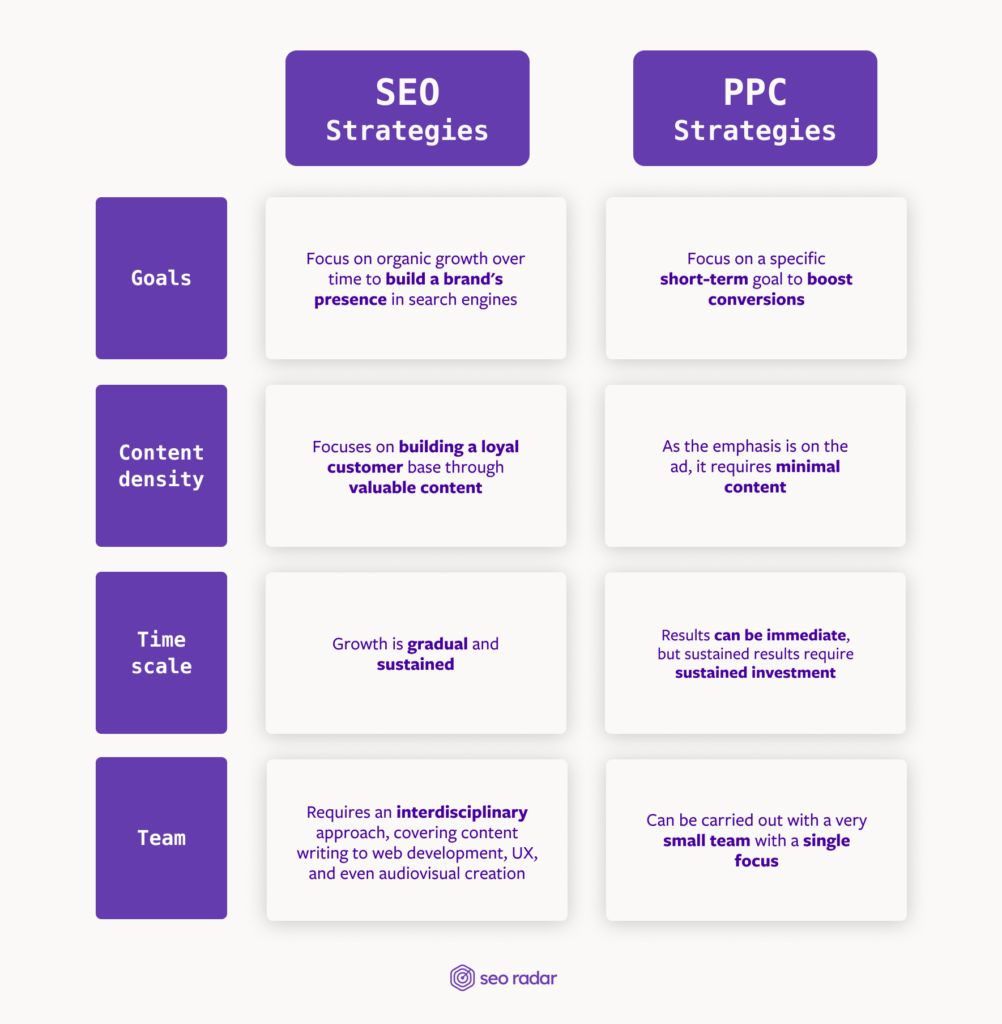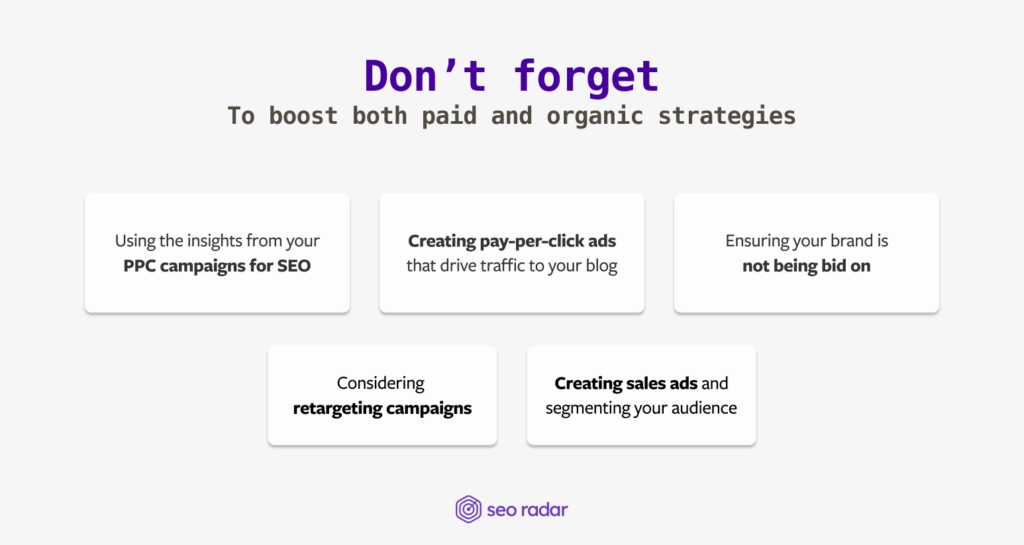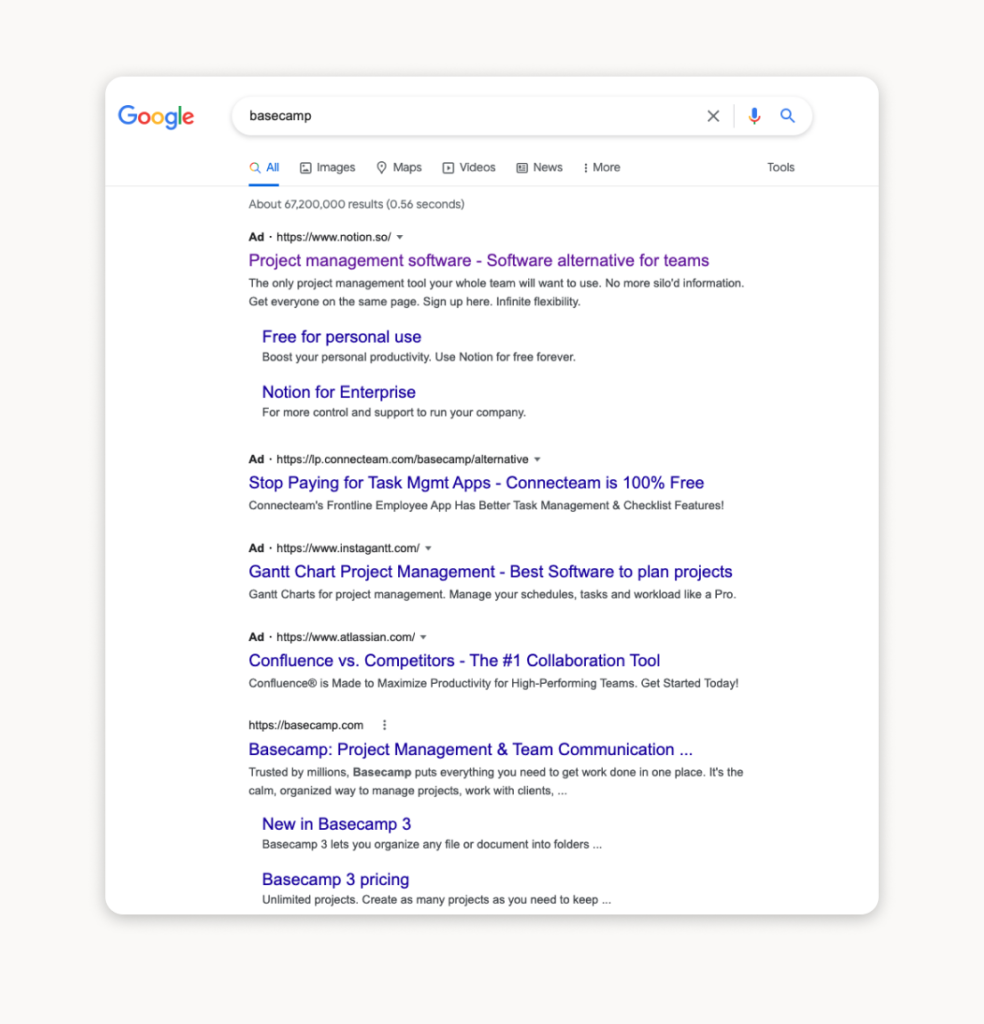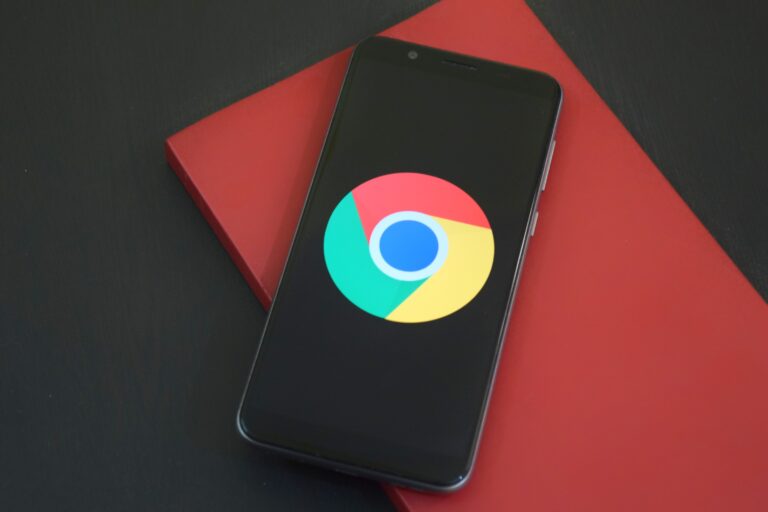If you’ve reached this article, you’re probably facing two questions:
- Which channel has a higher ROI, SEO (search engine optimization) or PPC (pay-per-click)?
- Where should you invest more heavily?
Truth be told, there is no one simple answer to these questions. Essentially, everything depends on your industry, your marketing budget, and your goals. Yet, both strategies can coexist and help you gain visibility and rank on Google.
But, regardless of these factors, what is generally the best way to determine what strategy to use? Or, more specifically, how do you keep a good balance between organic and paid search strategies?
In this post, we’ll analyze:
- The pros and cons of SEO and PPC
- Key differences between the two
- The benefits of investing in both paid and organic channels
- Some PPC and organic search synergies, and how to implement them in your marketing plan
Let ‘s begin!
SEO Pros: Why Does SEO Matter For Your Business Visibility?
At one time or another, you might have wondered: “Do I really need to care about SEO?”. Let’s look at some SEO statistics to find out:
- 47% of customers will read 3-5 blog posts before engaging with a company’s sales team
- Almost 80% of users ignore paid ads in search results, strongly preferring organic over paid links.
- Organic search results get 70% of clicks.
- 49% of marketers report organic search to have the best ROI out of any marketing channel.
SEO strategies have a lot of pros. With the right approach, SEO can bring you a consistent inflow of highly qualified leads who understand the value behind your product.
At first sight, it may seem like organic clicks are “free”. Although they require time and resources, there’s no “cost-per-click”. A lead magnet could bring you 1,000 or 10,000 customers, for exactly the same investment. That’s why a solid SEO strategy has the potential to help you grow while keeping your LAC (lead acquisition cost) low.
Moreover, if you optimize your website properly, its positioning should be more stable, showing successful ranking results in the long run. Unlike PPC, which only works in the short term and requires a constant influx of capital, SEO works 24/7.
SEO is far more cost-effective and scalable than PPC – but it’s not perfect. In the next section, we’ll take a look at some SEO cons.
SEO Cons
For starters, a comprehensive SEO strategy takes a while to yield results, especially if your business and domain are new. Plus, good SEO implies staying glued to Google updates, and adapting your strategy accordingly.
While you won’t be charged per click, SEO can be quite resource-intensive.
A 360° SEO strategy involves:
- Routine technical SEO audits and optimization
- Creating valuable content regularly
- Implementing a cost-effective link building strategy
- Incorporating user experience (UX) best practices
- Staying on top of content trends in your niche
Investing in these areas won’t just help you to rank, but also to protect your positioning in the long-term.
SEO can bring you lasting benefits when it comes to building brand awareness and keeping your cost-per-lead low. But it does require perseverance, patience, and resources.
PPC Pros: Why Does PPC Matter For Your Marketing Plan?
Despite the rising use of ad blockers, PPC remains an extremely powerful strategy for boosting a company’s online visibility. Want to know why? Just look at the stats:
- Brand awareness can be increased by 80% through advertising, according to Techjury
- 63% of the participants of a Search Engine Land survey revealed that they click on Google ads
- 75% of participants in a Clutch study find it easier to locate what they’re looking for on paid ads
When you invest in PPC (pay-per-click) ads, you temporarily bypass the rules of organic positioning to make sure your message gets in front of your target audience. In short, your PPC ads will appear first on the Google SERPs, regardless of whether you’re meeting Google’s SEO standards.
With the right strategy, it’ll be quite likely that those who click on your ads are actually interested in your products or services. That’s why PPC is often used by up-and-coming brands to get quick results.
Additionally, PPC allows brands to get exposure on different platforms (the Google SERPs, YouTube, Instagram, Facebook, etc.) without having to invest in a long-term content strategy.
PPC Cons
PPC also has a few drawbacks. First of all, ads are paid per click, and the more conversions you get from them, the more expensive they’ll be. Aside from that, PPC only drives results while you invest in it. Thus, successful, long-term campaigns can be quite expensive.
If you only rely on PPC, your traffic will depend on the amount of money you spend on ads. Consequently, if the ads stop, users won’t find you as easily anymore. And without SEO, your site has a low chance of appearing among the first organic search results.
Can PPC & SEO Coexist In Your Marketing Plan?
Long story short, they absolutely can! Complementing SEO & PPC can be a great way to achieve quick and stable, short-term and long-term results. In this section, we’ll explore how a combination of PPC and SEO can help you increase your brand awareness and get conversions.
You can use SEO to:
- Build a community of advocates thanks to valuable content. Thus, keeping your existing and potential customers close and engaged.
- Build a strong brand presence in a scalable way.
- Lower your LAC.
You can use PPC to:
- Increase traffic and conversions quickly.
- Execute specific promotional campaigns, offers, discounts, launches, and more.
- Get insights into your users’ preferences and how they interact with your platform, at scale.
All in all, we can differentiate between SEO and PPC strategies as follows:
| SEO Strategies | PPC Strategies | |
| Goals | Focus on organic growth over time to build a brand’s presence in search engines | Focus on a specific short-term goal to boost conversions |
| Content density | Focuses on building a loyal customer base through valuable content | As the emphasis is on the ad, it requires minimal content |
| Time scale | Growth is gradual and sustained | Results can be immediate, but sustained results require sustained investment |
| Team | Requires an interdisciplinary approach, covering content writing to web development, UX, and even audiovisual creation | Can be carried out with a very small team with a single focus |
Search Engine Marketing (SEM)
We’ve discussed the differences between SEO and PPC, and how each strategy affects a company’s online visibility.
We recommend you analyze your current goals and how fast you need to see results and distribute your investment accordingly. But consider investing in both SEO and paid. Basically, think beyond SEO and PPC and go for a 360° SEM (Search Engine Marketing) strategy.
SEM is a way of doing internet marketing that combines organic search engine optimization with paid advertising to boost online visibility.
Basically, it involves:
- SEO
- PPC
- Other paid ads
- Social media marketing
The goal here is to increase visibility on all fronts. But, what is the best way to combine organic and paid strategies? Let’s explore it in the next section.
PPC and Organic Search Synergies & How to Apply Them to Your Marketing Plan
So far, we’ve analyzed the pros and cons of SEO & PPC, and briefly explained why you should leverage both paid and organic strategies. But, how can you do it effectively?
We recommend:
- Using the insights from your PPC campaigns for SEO
- Creating pay-per-click ads that drive traffic to your blog
- Ensuring your brand is not being bid on
- Considering retargeting campaigns
- Creating sales ads and segmenting your audience
Let’s dive deeper.
Use the Data from the PPC Campaign for SEO
You can use the insights you gather through your PPC campaign to optimize your SEO strategy. PPC advertising allows you to quickly identify which keywords have the highest conversion rates for your users. Based on this information, you can craft relevant SEO content for your brand.
The same applies to other types of information you receive through PPC conversions, such as which headlines, content, and calls to action (CTAs) work best.
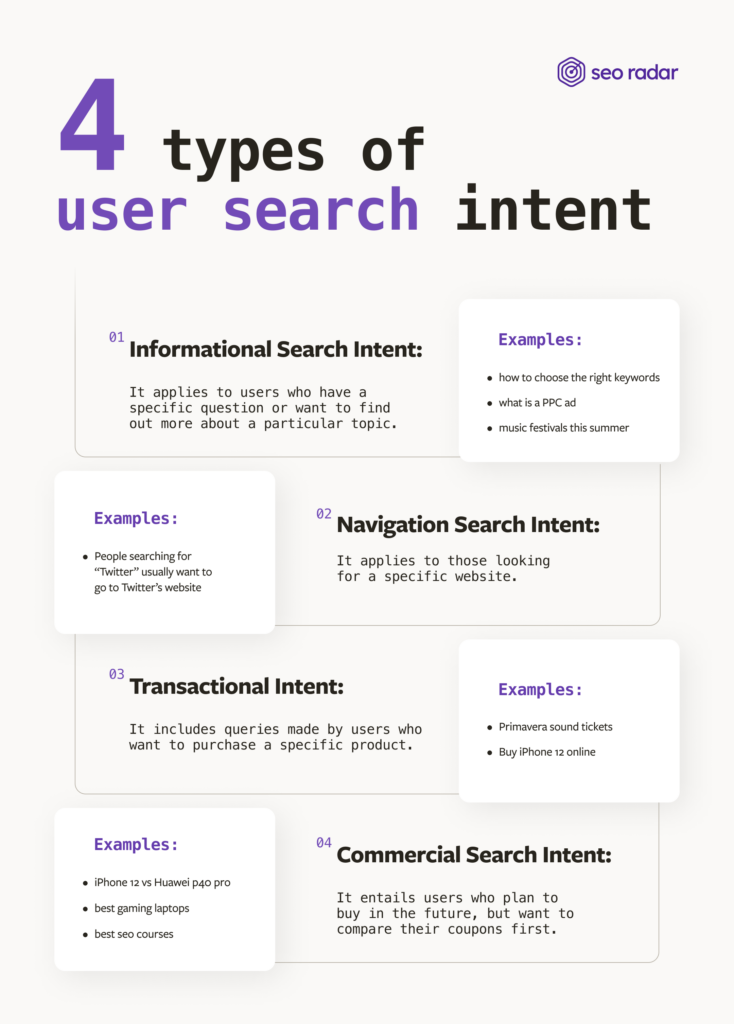
Pro Tip: Make sure your keywords are aligned with users’ search intent before reusing them. This is the only way Google will properly position you, by determining if what you are offering aligns with what the user expects to find.
Create pay-per-click ads that drive traffic to your blog
If you want more traffic or brand awareness, you can link your PPC strategy to the blog content on your website. It is a great way to take advantage of the fact that users enter articles through PPC that will be optimized for SEO.
Pro tip: Producing quality content that meets real user needs can get you ranked in position zero (the answer box). Fine-tuning your content so it provides clear answers to common questions is a great way to increase your visibility.
Ensure your brand is not being bid on
Ever searched for a certain brand and, surprisingly, found ads for other brands offering similar products and services?
The reason is that, in some cases, companies use the names of their competitors to position themselves favorably in the search results.
So far, Google hasn’t enforced any measures to prevent this practice. So, as your brand grows, you may have to bid on your own branded terms to protect your SERP visibility. SEO will play a key role as well. That’s why one of your first goals, as a new brand, should be to rank on Google for your own name + your key service.
Consider retargeting
Retargeting is about showing your ads to people who have already visited your website.
If you run an eCommerce site, for example, you can serve specific display ads or SEO content to users who added a product to the cart but left the site. This way, they will be encouraged to purchase the product again.
Plus, it is possible to offer some extra value to this segment by creating specific landing pages and blogging content that suit their interests.
Create segmented, conversion-oriented ads
If you have, for example, an eCommerce site, using sales ads and segmenting your buyers is especially important.
Even if you’ve already seen good SEO results, this is still crucial. But why? It’s simple: ads with product listings, images, and prices are very appealing to consumers, especially if the product or service is what they were looking for.
Looking to Rank on Google? What About Your Code?
In this post, we discussed how you can get more sales and grow your audience through a combination of PPC and SEO strategies.
Whether you’ll go for a holistic SEM strategy or just invest in SEO, staying on top of your website’s code can make a world of difference.
An apparently small code change, such as a removed metatag, could have a significant impact on your positioning. And you may only find out after your organic traffic drops.
That’s why SEORadar monitors changes to your website’s code and notifies you before they affect your rankings. We cover over 100 on-page elements, even on staging.
Curious? Sign up for a free trial or schedule a demo today.

